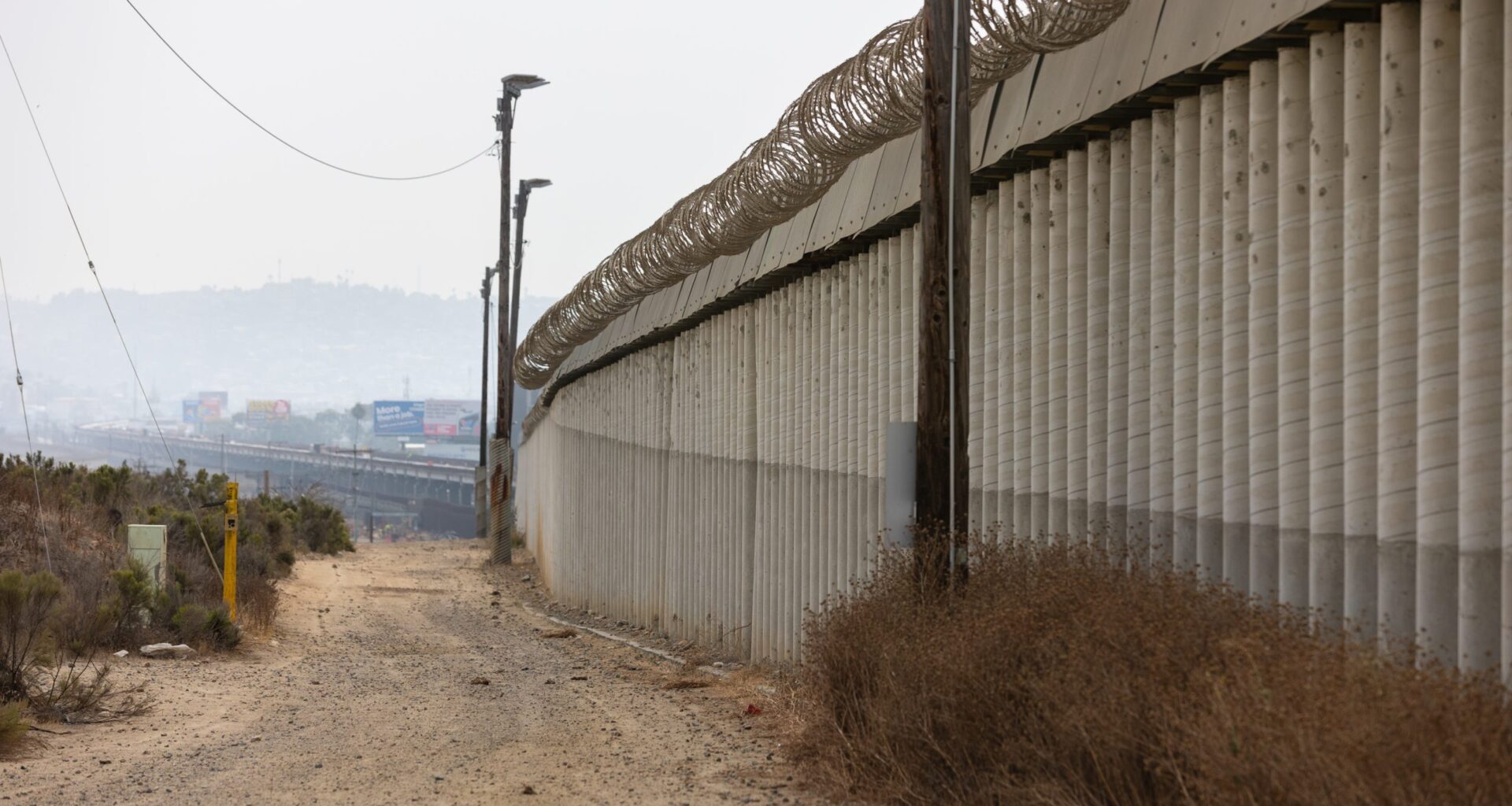Why This Matters
The conference comes months after Congress approved about $6.2 billion for border surveillance technology and AI tools at ports of entry, among other provisions.
A border technology conference this week in San Diego brought together local public officials and federal immigration agencies to meet with dozens of AI, defense and surveillance technology companies.
Happening for the third time, the Border Technology Summit, which was closed to local press, comes months after Congress approved more than $170 billion in new funding for immigration enforcement, including about $6.2 billion set aside for border surveillance and AI technologies, among other provisions.
The conference gives tech and defense industries a private audience of government officials now supercharged with funding and eager to find technological solutions to what they see as the biggest threats on the border.
Among the discussion topics were countering drone incursions at the border, surveillance for immigration enforcement, AI for combatting organized crime, biometric-aided inspections, trade at ports of entry and military operations on the border.
Several attendees were from the San Diego County Sheriff’s Office and the San Diego Association of Governments.
While unauthorized border crossings are near record lows, the Trump administration wants to fortify the border further. His administration has already resumed construction of the border fence. The new funding also calls for new inspection tools for travelers at ports of entry, surveillance towers along the border – but only if they have AI – and includes money for “enhancing border security by combating drug trafficking.”
But civil rights and privacy groups have raised alarms over the administration’s rapid adoption of AI and surveillance technologies in other cases, which they say operate with little oversight and the potential to amass detailed information on immigrants and U.S. citizens broadly. Some also worry information collected by the administration could be weaponized against political opponents and dissidents.
Earlier this month, the administration reactivated a contract with Paragon Solutions, an Israeli spyware company that in other places has been used to spy on journalists and political opponents.
In March, Trump ordered the federal government to share data across its agencies and has turned to Palantir, a data aggregation and AI company, to merge information profiles. Wide adoption of the technology has the potential to create detailed profiles of Americans, the New York Times reported.
An attendee list from the conference shows that Palantir was among the participants. Paragon Solutions was not listed. Speakers included Jeffrey Stalnaker, the chief patrol agent of Border Patrol’s San Diego Sector, Mariza Marin, director of the San Ysidro Port of Entry and other CBP and Department of Homeland Security executive staff from across the country.
inewsource requested to attend the event and purchase a ticket – more than $1,000 for nonprofits – but a director for IDGA, which organized the conference and other similar ones on national security, said that would not be possible because the event was not open to the media.
Justin Ederheimer, an IDGA director, did not return a request for further comment. A spokesperson for CBP did not answer questions from inewsource about the conference.
It’s unclear exactly what details conference attendees had access to on what threats the government has identified or any specific solutions the government is eyeing.
Attendees at the conference told inewsource there was a feeling of excitement over the Trump administration’s investment and their perception that law enforcement can do its job with more support from the president.
One panel covering local and federal law enforcement collaboration featured Chris Steffen, a San Diego County Sheriff’s Office captain.
In a statement, the sheriff’s media team said Steffen planned to discuss “different types of grant funding, covert surveillance vehicles, and other camera systems” as well as “staffing challenges and our operational coordination with our federal counterparts in our joint anti-narcotics efforts.”
They also said that the Sheriff’s Office complies with SB 54, a state law limiting local and federal collaboration for immigration purposes. Task forces, of which there are more than 20 in San Diego County, allow cooperation for the purposes of crimes like drug or human trafficking.
Besides Steffen, a sheriff’s lieutenant and cybersecurity manager planned to attend the conference.
Three staff members from the San Diego Association of Governments, or SANDAG, also planned to go. A spokesperson said they were attending to learn about “border security, innovations and cross border trade facilitation.”
Type of Content
News: Based on facts, either observed and verified directly by the reporter, or reported and verified from knowledgeable sources.
